Abstract
The growth of Pseudomonas fluorescens NCIMB 11764 on cyanide as the sole nitrogen source was accomplished by use of a modified fed-batch cultivation procedure. Previous studies showing that cyanide metabolism in this organism is both an oxygen-dependent and an inducible process, with CO2 and ammonia representing conversion products, were confirmed. However, washed cells (40 mg ml-1 [dry weight]) metabolized cyanide at concentrations far exceeding those previously described; 85% of 50 mM KCN was degraded in 6 h. In addition, two other C1 metabolites were detected in incubation mixtures; their identities were confirmed as formamide and formate by 13C nuclear magnetic resonance spectrocopy, high-pressure liquid chromatography, radioisotopic trapping experiments, and other analytical means. The relative yields of all four metabolites (CO2, formamide, formate, and ammonia) were shown to be dependent on the KCN concentration and availability of oxygen; at 0.5 to 10 mM substrate, CO2 was the major C1 product, whereas at 20 and 50 mM substrate, formamide and formate were principally formed. The latter two metabolites also accumulated during prolonged anaerobic incubation, suggesting that P. fluorescens NCIMB 11764 can elaborate several pathways of cyanide conversion. One is formally similar to that proposed previously (R. E. Harris and C. J. Knowles, FEMS Microbiol. Lett. 20:337-341, 1983), involving the oxygen-dependent conversion of cyanide to CO2 and ammonia. The other two, occurring in the presence or absence of oxygen, involve separate reactions to yield, respectively, formate plus ammonia or formamide.(ABSTRACT TRUNCATED AT 250 WORDS)
Full text
PDF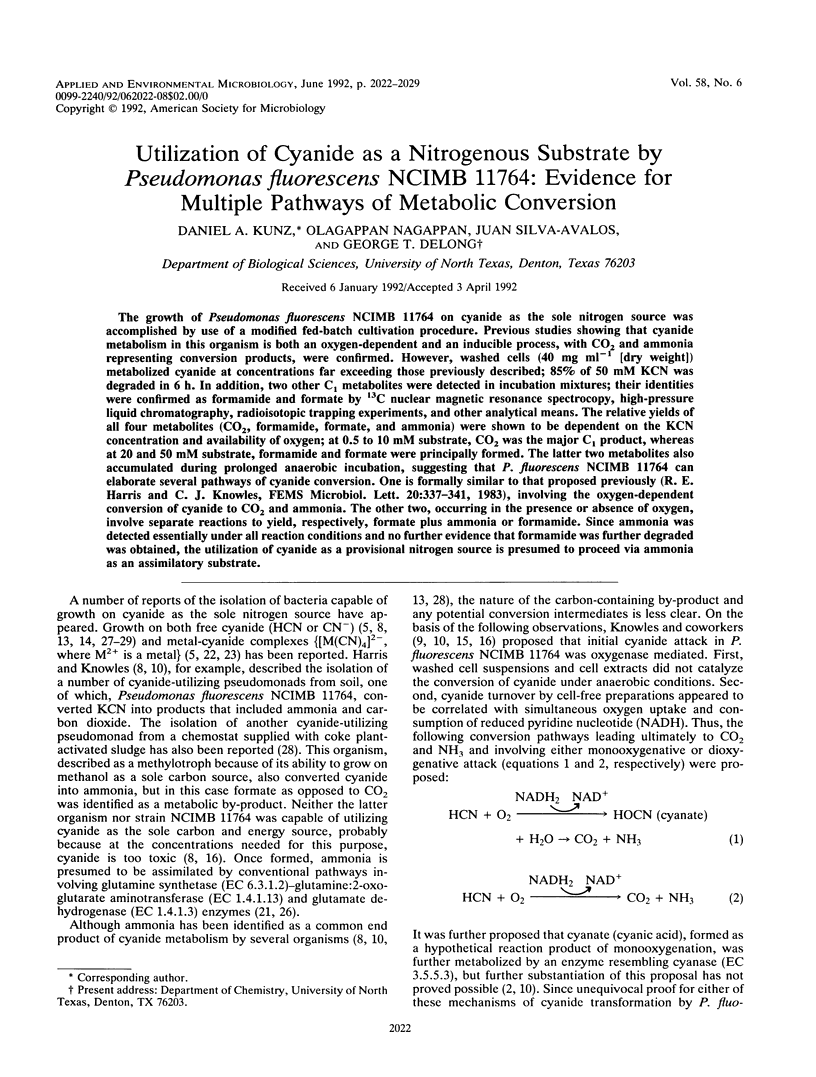
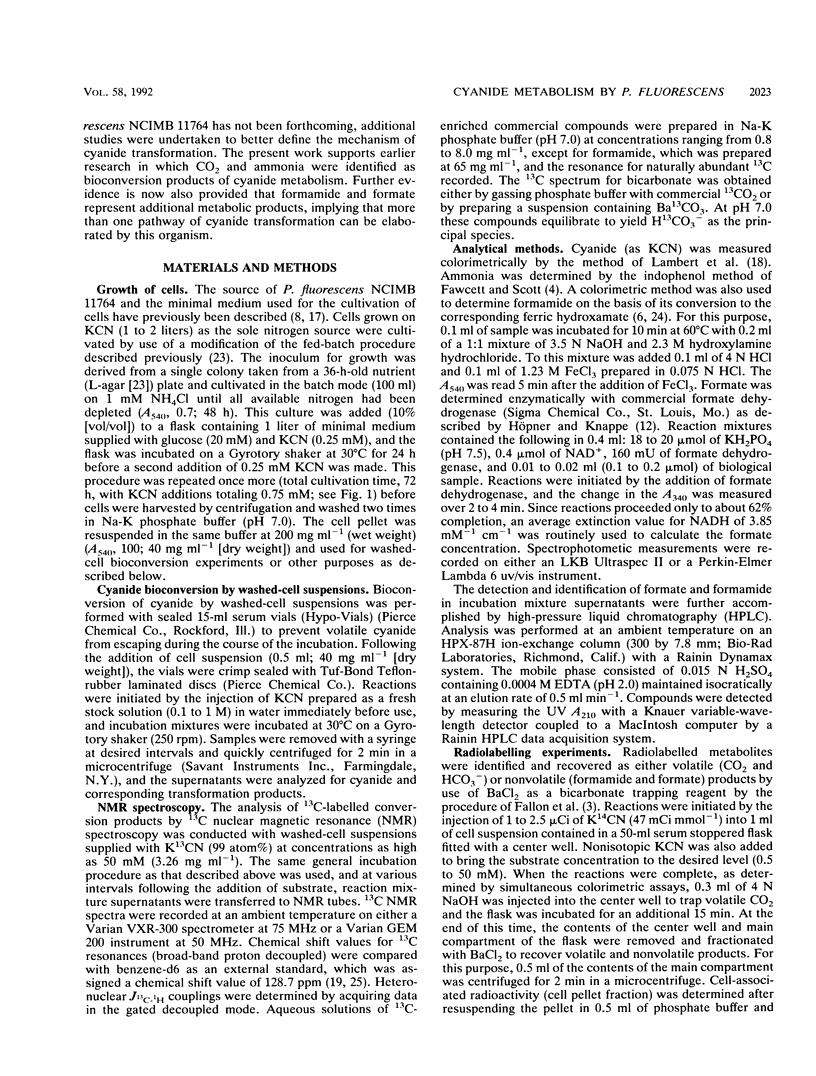
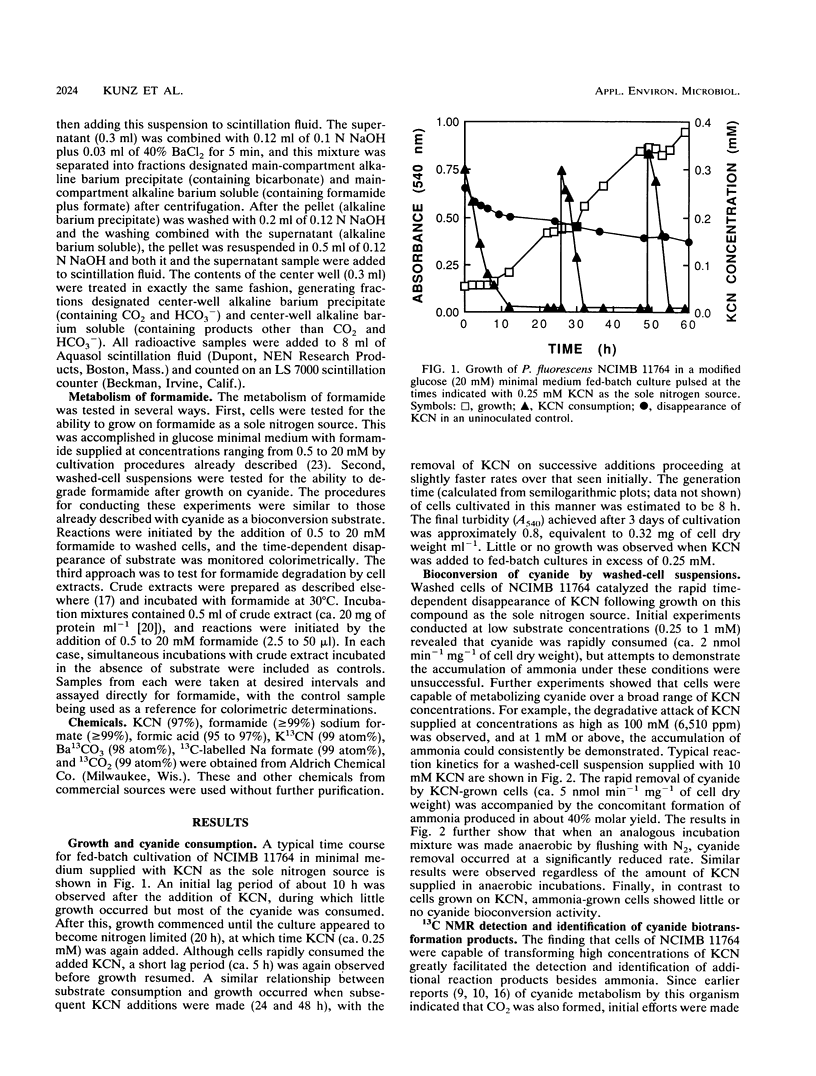
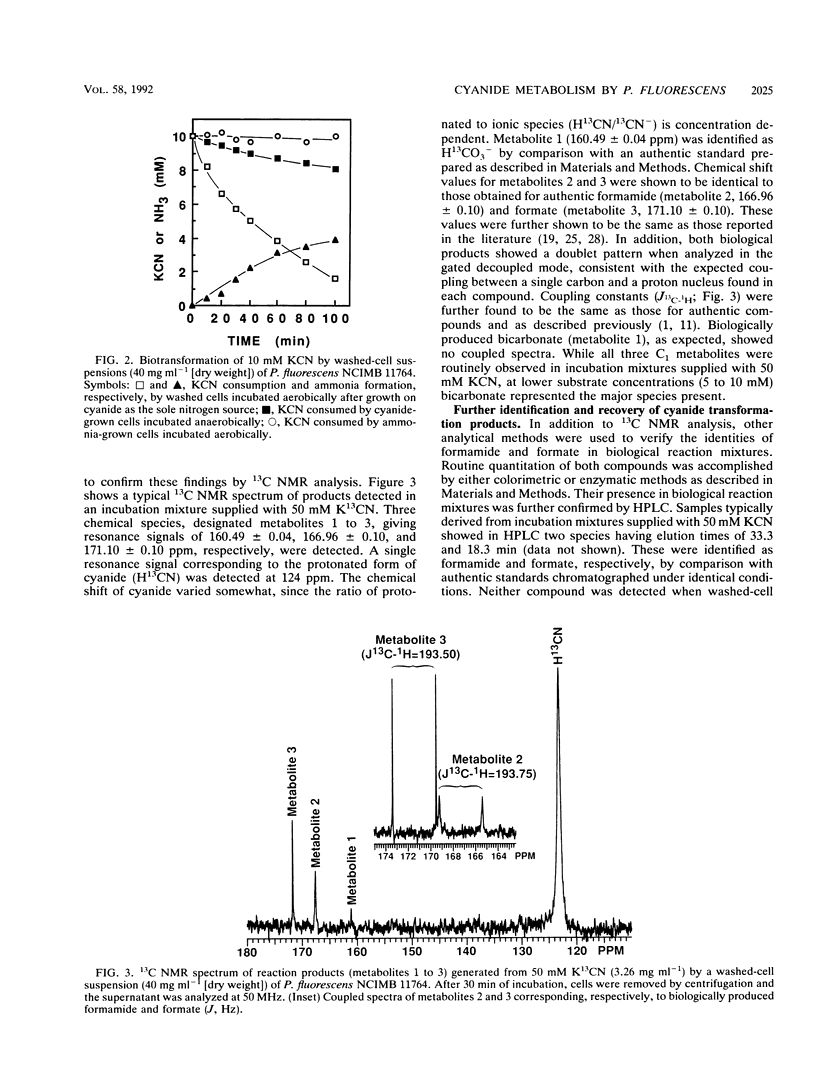
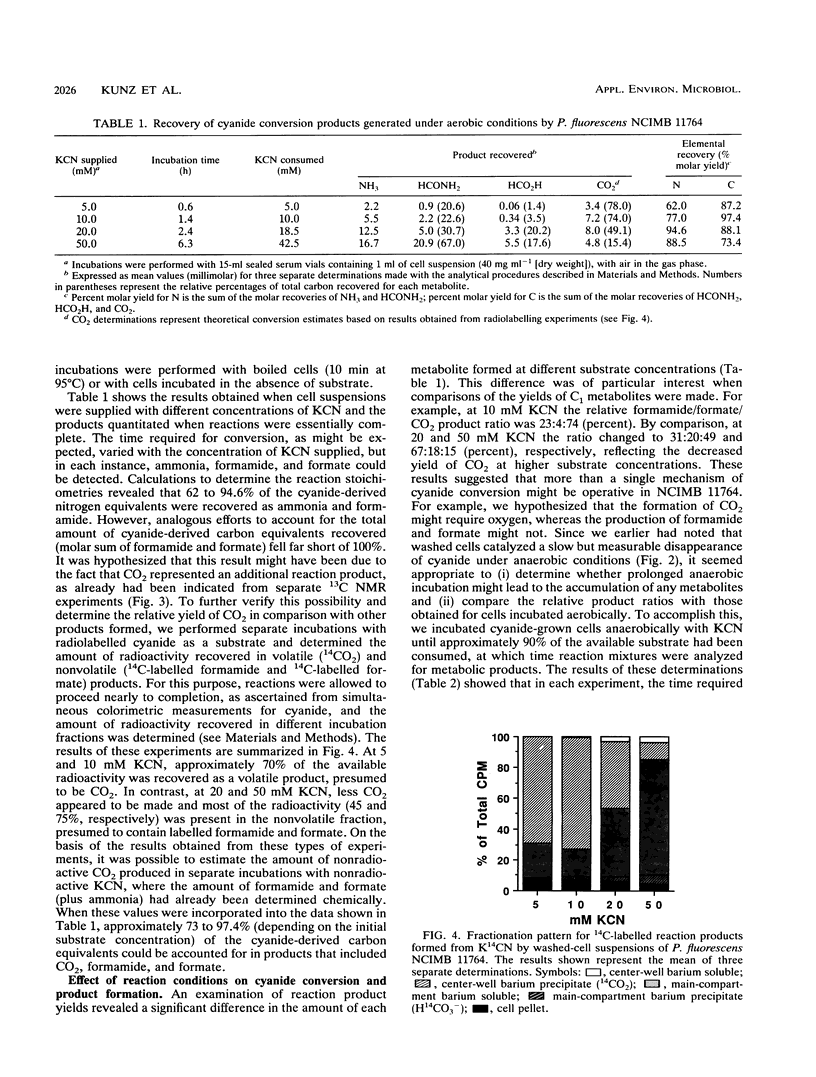
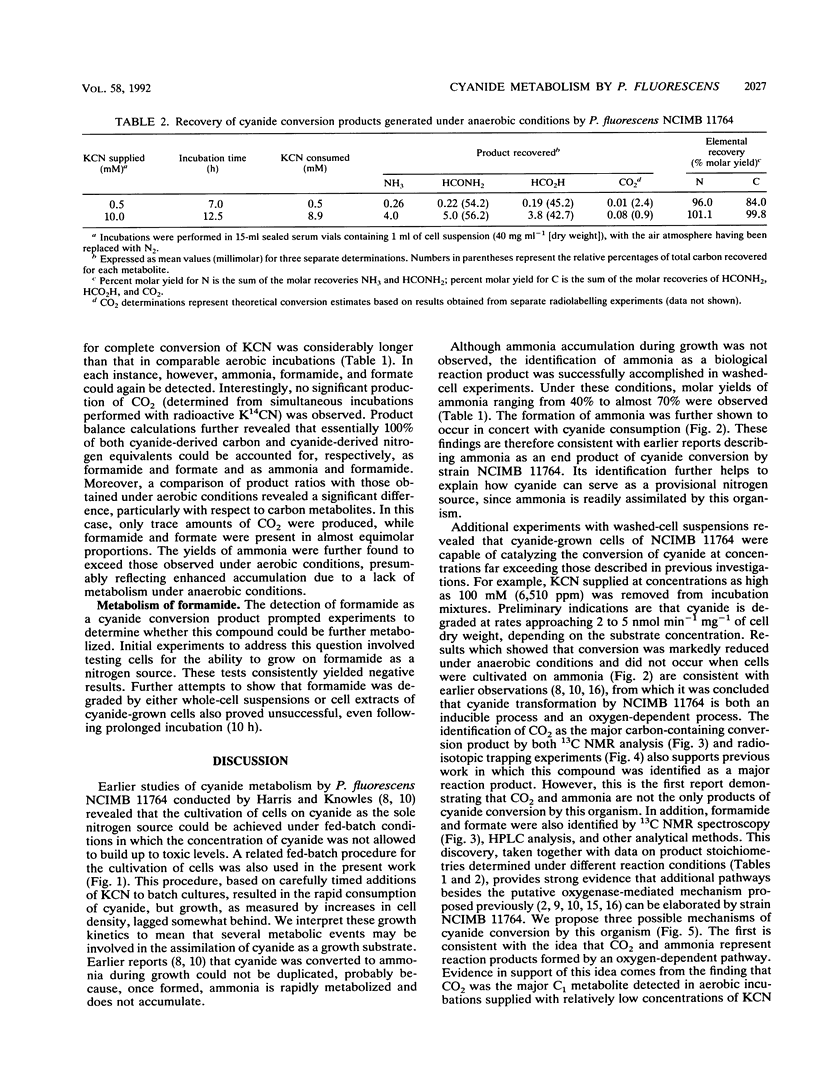
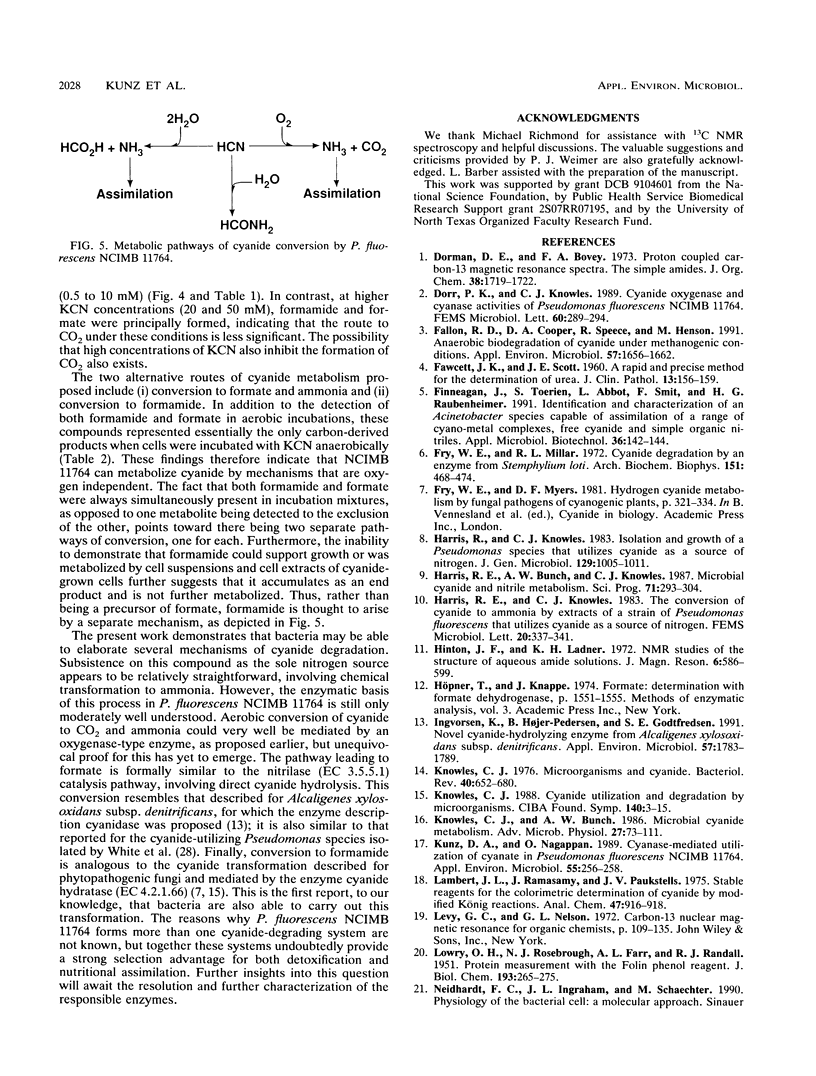
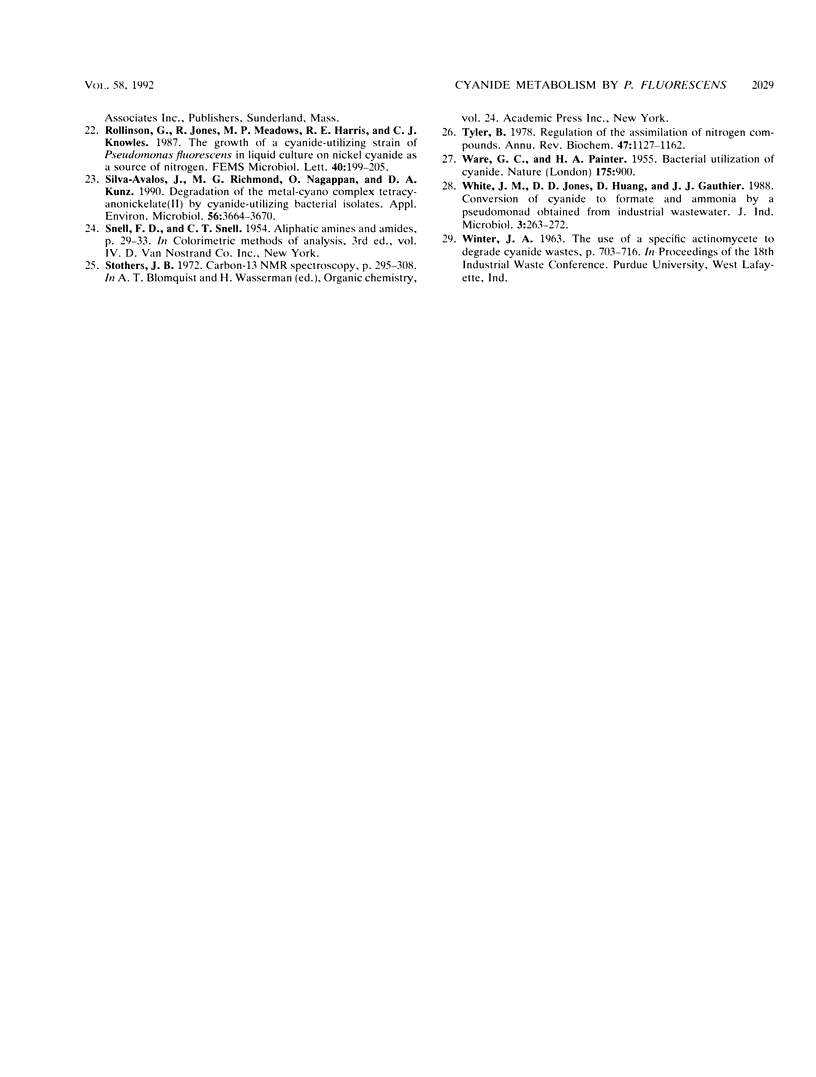
Selected References
These references are in PubMed. This may not be the complete list of references from this article.
- FAWCETT J. K., SCOTT J. E. A rapid and precise method for the determination of urea. J Clin Pathol. 1960 Mar;13:156–159. doi: 10.1136/jcp.13.2.156. [DOI] [PMC free article] [PubMed] [Google Scholar]
- Fallon R. D., Cooper D. A., Speece R., Henson M. Anaerobic biodegradation of cyanide under methanogenic conditions. Appl Environ Microbiol. 1991 Jun;57(6):1656–1662. doi: 10.1128/aem.57.6.1656-1662.1991. [DOI] [PMC free article] [PubMed] [Google Scholar]
- Fry W. E., Millar R. L. Cyanide degradion by an enzyme from Stemphylium loti. Arch Biochem Biophys. 1972 Aug;151(2):468–474. doi: 10.1016/0003-9861(72)90523-1. [DOI] [PubMed] [Google Scholar]
- Harris R., Knowles C. J. Isolation and growth of a Pseudomonas species that utilizes cyanide as a source of nitrogen. J Gen Microbiol. 1983 Apr;129(4):1005–1011. doi: 10.1099/00221287-129-4-1005. [DOI] [PubMed] [Google Scholar]
- Ingvorsen K., Højer-Pedersen B., Godtfredsen S. E. Novel cyanide-hydrolyzing enzyme from Alcaligenes xylosoxidans subsp. denitrificans. Appl Environ Microbiol. 1991 Jun;57(6):1783–1789. doi: 10.1128/aem.57.6.1783-1789.1991. [DOI] [PMC free article] [PubMed] [Google Scholar]
- Knowles C. J., Bunch A. W. Microbial cyanide metabolism. Adv Microb Physiol. 1986;27:73–111. doi: 10.1016/s0065-2911(08)60304-5. [DOI] [PubMed] [Google Scholar]
- Knowles C. J. Cyanide utilization and degradation by microorganisms. Ciba Found Symp. 1988;140:3–15. doi: 10.1002/9780470513712.ch2. [DOI] [PubMed] [Google Scholar]
- Knowles C. J. Microorganisms and cyanide. Bacteriol Rev. 1976 Sep;40(3):652–680. doi: 10.1128/br.40.3.652-680.1976. [DOI] [PMC free article] [PubMed] [Google Scholar]
- Kunz D. A., Nagappan O. Cyanase-mediated utilization of cyanate in Pseudomonas fluorescens NCIB 11764. Appl Environ Microbiol. 1989 Jan;55(1):256–258. doi: 10.1128/aem.55.1.256-258.1989. [DOI] [PMC free article] [PubMed] [Google Scholar]
- LOWRY O. H., ROSEBROUGH N. J., FARR A. L., RANDALL R. J. Protein measurement with the Folin phenol reagent. J Biol Chem. 1951 Nov;193(1):265–275. [PubMed] [Google Scholar]
- Silva-Avalos J., Richmond M. G., Nagappan O., Kunz D. A. Degradation of the metal-cyano complex tetracyanonickelate(II) by cyanide-utilizing bacterial isolates. Appl Environ Microbiol. 1990 Dec;56(12):3664–3670. doi: 10.1128/aem.56.12.3664-3670.1990. [DOI] [PMC free article] [PubMed] [Google Scholar]
- Tyler B. Regulation of the assimilation of nitrogen compounds. Annu Rev Biochem. 1978;47:1127–1162. doi: 10.1146/annurev.bi.47.070178.005403. [DOI] [PubMed] [Google Scholar]
- WARE G. C., PAINTER H. A. Bacterial utilization of cyanide. Nature. 1955 May 21;175(4464):900–900. doi: 10.1038/175900a0. [DOI] [PubMed] [Google Scholar]


